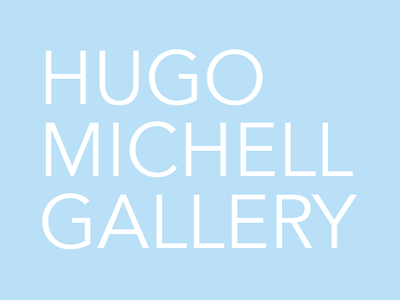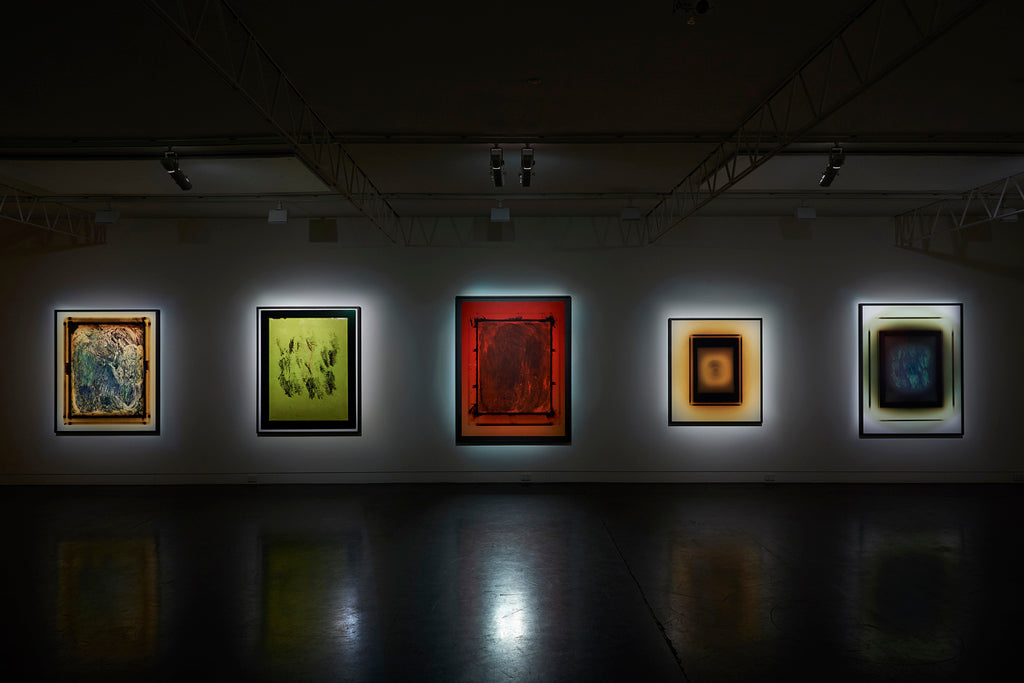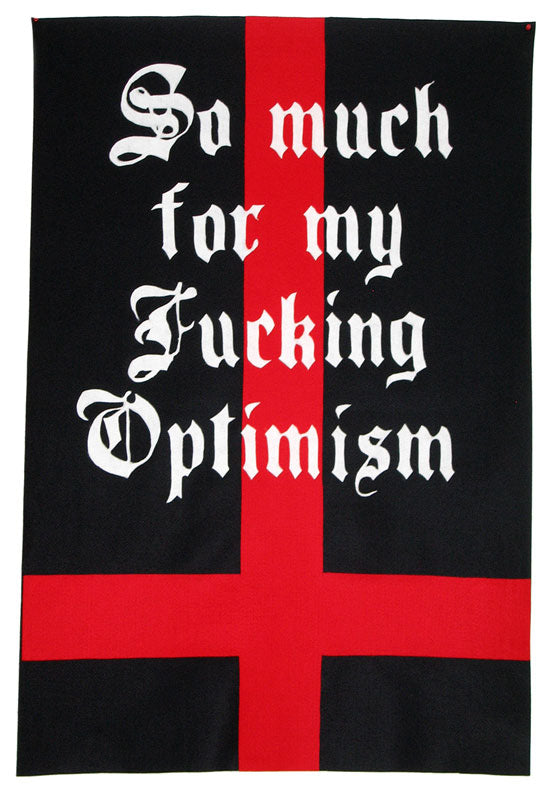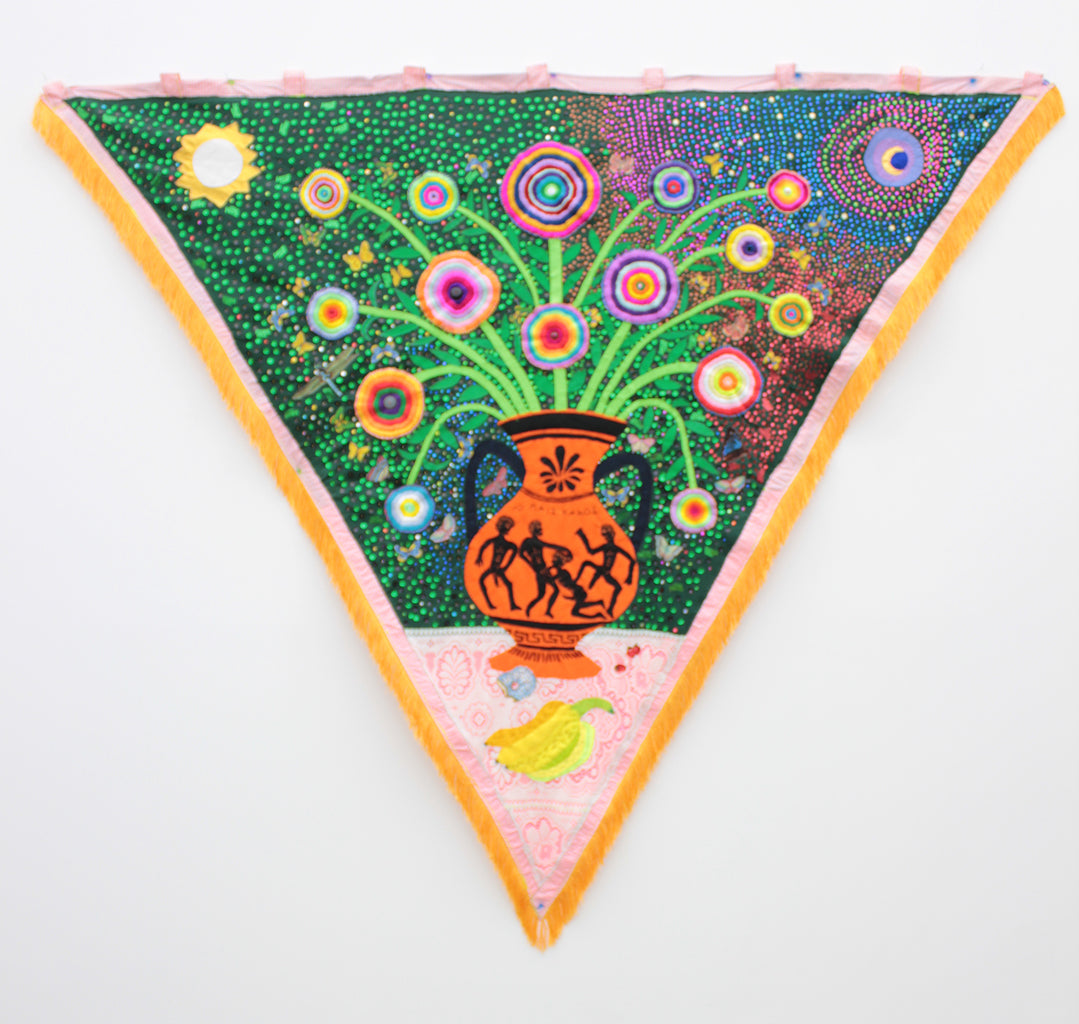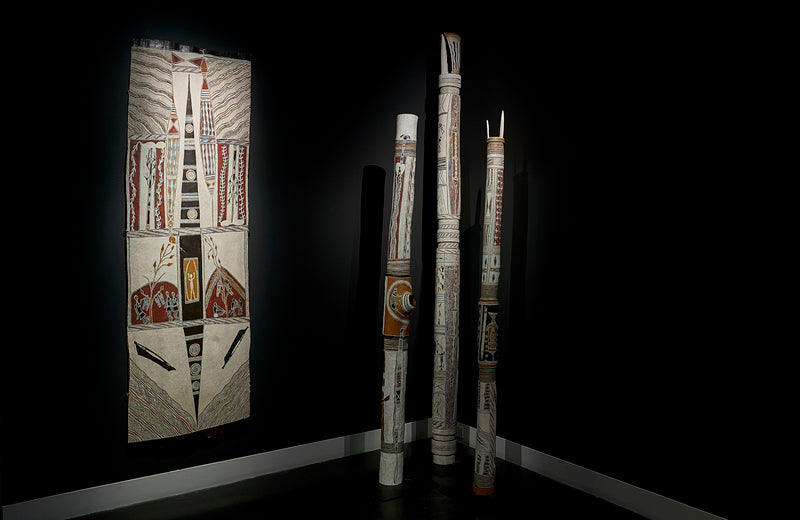News
Justine Varga is exhibiting her series ‘Areola’ at City Gallery Wellington as part of a curated exhibition titled ‘News from the Sun’.
The window, the horizon, and the still life are some of photography’s biggest clichés. Darkroom and Instagram famous, beloved by professionals and amateurs alike, they demand to be photographed. They have become ciphers for photography itself. News from the Sun features three photographers, who each explore one of these motifs. In each case, the favoured motif is abstracted, serialised, and transformed through formal processes and manipulations that push it far beyond the cliché.
Australian artist Justine Varga’s Areola series combines cameraless and lens-based photography. Key to her investigation is the repeated image of a latticed window, taken from the same negative but shown in multiple states. It harks back to some of the first photographs ever made, Henry Fox Talbot’s 1835 views of a latticed window.
‘News from the Sun’ runs until 15 March 2020. Visit the City Gallery Wellington website for full details.
The latest Countess Report has been released, providing a reference point for gender equity in Australia’s contemporary visual arts. The report builds on the 2016 edition, showing significant increase in gender equity across public galleries, artist-run initiatives, major museums and university galleries, biennales, commercial galleries and contemporary art organisations. A total of 13,000 artists were counted across 184 organisations.
“Congratulations to the ARIs, contemporary art organisations, commercial galleries, major museums and university galleries, public galleries and biennales who’ve made such significant gender equity gains.
However, the research as revealed in the report focuses public attention on the pressing need for state-owned collections and institutions to match the progress made by the independent sector to redress the gender imbalance in collecting and promoting the work of women artists.”– John Cruthers, The Sheila Foundation, Chair.
The Countess Report is a benchmarking project and online resource on gender equality in the Australian contemporary art sector, founded by Elvis Richardson. The Countess Report is funded by the Sheila Foundation Ltd (formerly Cruthers Art Foundation), and backed by the National Association for the Visual Arts (NAVA).
Hugo Michell Gallery invites you to the opening of Trent Parke’s ‘The Crimson Line’ and Sangeeta Sandrasegar’s ‘Bestiarium 2019’ on Thursday 31 October 6-8pm.
For Trent Parke’s new series ‘The Crimson Line’, industrial landscapes are merged with ethereal cloudscapes, a splicing of atmospheres and dual notions of reality.
Life and death, light and shadow, space and time, memory. These are the themes that have always been at the forefront of Parke’s work. The Crimson Line continues to explore these ideas. Cinematic in his vision, Parke’s work has always been firmly established in film Noir. From the micro to the macro, science, genetics, factory lines, laboratories and processing plants. Global warming, consumerism and beauty, his landscapes provide a backdrop that frames a dark and foreboding narrative of strange truth and fiction.
__
The series Bestiarium 2019 draws upon the history of visual representation from botanical and natural history illustrations and classical Western art genres to examine the legacy of artistic vision upon ways of knowing the world around us. The cutouts draw upon the watercolours of Austrian master dyer Aloys Zötl’s Bestiarium, a series of exquisite paintings of various animals undertaken from 1831 until his death in 1887. In Sandrasegar’s re-interpreted Bestiarium 2019 these fantastical animals sit alongside sculptures from collections of various German museums in settings of the artists imagination. The palette of the series draws upon they hyper-colour of Indian miniatures, and through these varied references Sandrasegar attempts to fix multiple expressions of seeing.
Sangeeta Sandrasegar has exhibited professionally in national exhibitions of emerging art at the Museum of Contemporary Art, Sydney; the Australian Centre of Contemporary Art, Melbourne; and the Gallery of Modern Art, Queensland; in addition to major international exhibitions and biennials in New Zealand, Korea, India and the USA.
Please join us in celebrating the launch of these two incredible exhibitions!
Exhibition runs until November 23.
Hugo Michell Gallery acknowledges the Kaurna people as the traditional custodians of the Adelaide region, and that their cultural and heritage beliefs are still as important to the living Kaurna people today.
Justine Varga is currently featured by Art Collector in their online art news. ‘Justine Varga : Camera Observa’ focuses on the balance between Varga’s intuitive and materially-emphasised photography practice and the controversy and critical response it has acquired.
The intellectual rigour of Varga’s work is often emphasised in descriptions of the artist and her practice. But while there is a fierce intelligence behind it, the work’s rich materiality is never diminished by an overbearing conceptual rigidity. Along with the film itself, Varga uses “a fairly limited amount of prosaic and abject materials in the production of my photo- graphs, coupled with various darkroom processes”, she says. The film is variously drawn on, handled, scratched, carried around, cried on and spat on by the artist over an extended period of time and then is physically manipulated in multiple ways to arrive at the final print.
Carrie Miller
Hugo Michell Gallery invites you to a special event in partnership with Tarnanthi. Join us for an ‘In Conversation’ between artist Djambawa Marawili AM and Will Stubbs, Co-ordinator of the Buku-Larrnggay Mulka Centre.
For this stellar exhibition, some of today’s foremost and pioneering Yolŋu artists come together as a group, or miṯtji. The exhibition demonstrates the collective revolutionary energy that inspires and emboldens artists from the same dynamic art centre, even as they work independently of each other. Together the artists push boundaries and conventions at Buku-Larrnggay Mulka Centre, at Yirrkala in north-east Arnhem Land – yet each in their own boldly creative direction.
Showing works from Gunybi Ganambarr, Malaluba Gumana, Manini Gumana, Djambawa Marawili AM, Noŋgirrŋa Marawili, Dhuwarrwarr Marika, Baluka Maymuru, Nyapanyapa Yunupiŋu, Garawan Waṉambi.
We look forward to seeing you on Saturday the 19th of October from 3pm.
Light refreshments provided.
Gunybi Ganambarr | Manini Gumana | Malaluba Gumana | Djambawa Marawili AM | Noŋgirrŋa Marawili | Dhuwarrwarr Marika | Baluka Maymuru | Garawan Waṉambi | Nyapanyapa Yunupiŋu
Hugo Michell Gallery acknowledges the Kaurna people as the traditional custodians of the Adelaide region, and that their cultural and heritage beliefs are still as important to the living Kaurna people today.
Tony Garifalakis is showing in Hope Dies Last: Art at the End of Optimism at Gertrude Contemporary. Curated by Mark Feary, Hope Dies Last spans two spaces, Gertrude Contemporary and Margaret Lawrence Gallery and presents a selection of Australian and international contemporary art.
Hope Dies Last self-identifies as “one of the most depressing events of the year,” promising to leave audiences emotionally crippled and wracked with negativity. It puts the dead in deadpan, examining our own mortality, suffering and failure through the lens of gallows humour.
Nicola Dowse
Hope Dies Last is on display at Gertrude Contemporary from October 5 to November 9, and at Margaret Lawrence Gallery from October 18 to November 14.
Paul Yore is included in the 16th International Triennial of Tapestry held at the Central Museum of Textiles, Łódź, Poland. The watchword of the 16th edition, “Breaching Borders”, refers to the issues of the modern world, which redefine the meaning of the identity of our civilisation, ethnic groups, social groups or each of us individually. Yore is one of 32 artists chosen to participate in the triennial. Since its beginnings, through 15 editions, the Triennial has had 1595 participating artists from 71 countries.
The exhibition runs until the 15th of March 2020.
Congratulations to Nadine Christensen and Richard Lewer who have been named as finalists in the 2019 Arthur Guy Memorial Painting Prize! Held every two years at the Bendigo Art Gallery, the Arthur Guy Memorial Painting Prize is designed to attract some of Australia’s finest contemporary artists, awarding a generous acquisitive cash prize of $50,000.
“The 2019 finalist pool offers an exciting mix of established and emerging artists, with varying interests – abstraction, portraiture and still life traditions are all represented,”
Bendigo Art Gallery Director Jessica Bridgfoot
Exhibition runs until December 8.
Hugo Michell Gallery invites you to the opening of ‘Mittji – The Group’, an exhibition of 9 Yolŋu artists in collaboration with the Buku-Larrŋgay Mulka Centre and in conjunction with Tarnanthi: Festival of Aboriginal and Torres Strait Islander Art on Thursday 26 September 6-8 pm.
Gunybi Ganambarr | Manini Gumana | Malaluba Gumana | Djambawa Marawili AM | Noŋgirrŋa Marawili | Dhuwarrwarr Marika | Baluka Maymuru | Garawan Waṉambi | Nyapanyapa Yunupiŋu
For this stellar exhibition, some of today’s foremost and pioneering Yolŋu artists come together as a group, or miṯtji. The exhibition demonstrates the collective revolutionary energy that inspires and emboldens artists from the same dynamic art centre, even as they work independently of each other. Together the artists push boundaries and conventions at Buku-Larrŋgay Mulka Centre, at Yirrkala in north-east Arnhem Land – yet each in their own boldly creative direction
Please join us in celebrating the launch of this exceptional exhibition!
Exhibition runs until the 26 October 2019.
Hugo Michell Gallery acknowledges the Kaurna people as the traditional custodians of the Adelaide region, and that their cultural and heritage beliefs are still as important to the living Kaurna people today.
Congratulations to Sally Bourke and Richard Lewer who have been announced as semi-finalists in the 2019 Doug Moran National Portrait Prize.
“For the judges, the shortlisted artists collectively demonstrate the way in which portraiture can and should be much more than the sheer skill of capturing of a likeness. The power of portraiture instead manifests from the almost intangible coming together of artist and subject; a tension or ‘rub’ that encourages the viewer to remain with a work and to return to it time and again, well beyond the initial moment of recognising the subject.
Judge Kelly Gellatly
The finalists will be announced on the 16 October and the winner will be revealed 30 October. The exhibition of finalists will be held at the historic Juniper Hall, Paddington from 31 October to 1 December 2019.
Showing: 161-170 of 306
